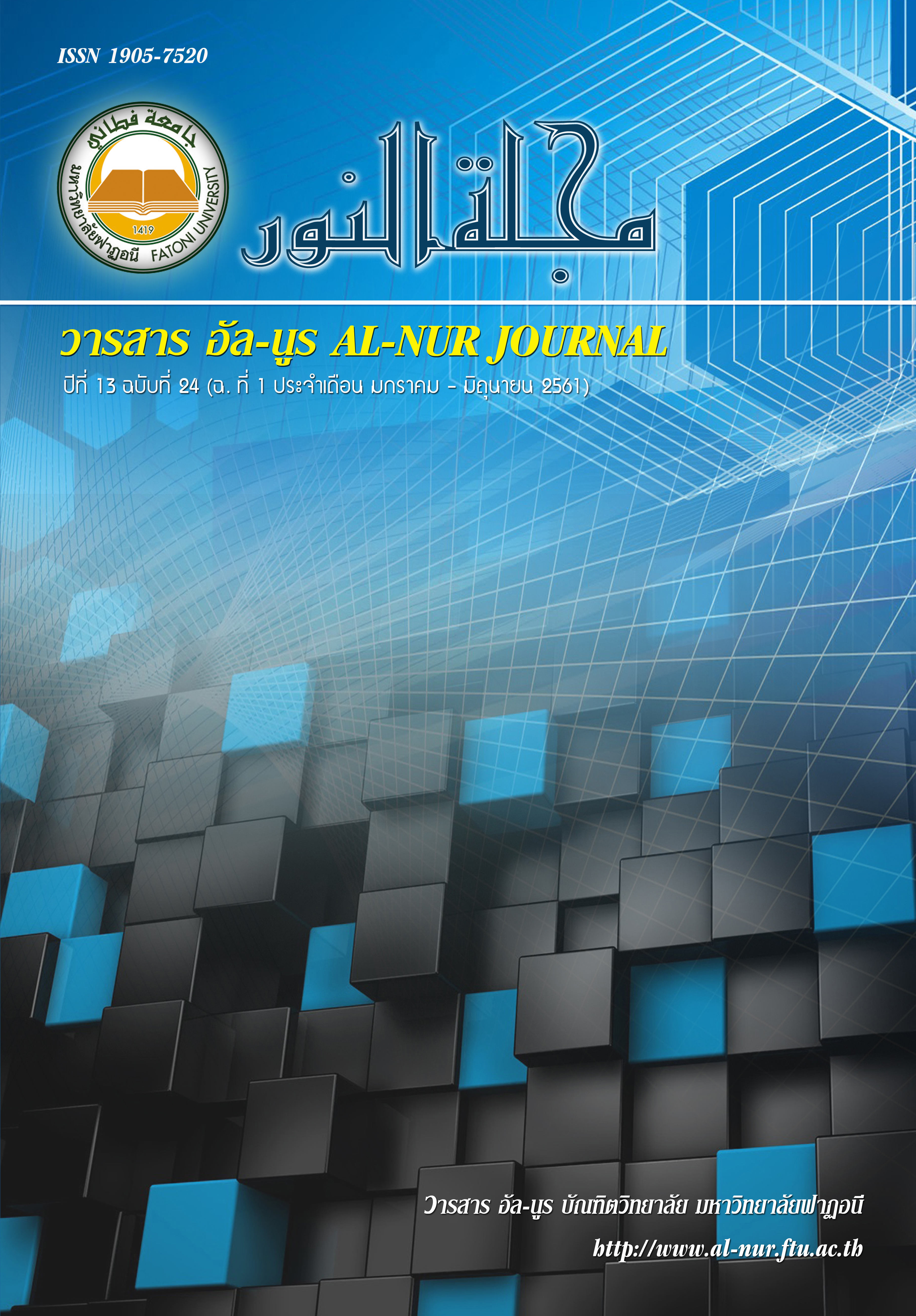Development of Drug Self-Management Supporting Program for Adult with Post Hypertensive Urgency Patients
Keywords:
Drug Self-Management, Hypertensive Urgency, Supporting ProgramAbstract
This research and development study was to develop a promoting drug self-management program for adult with post hypertensive urgency patients. Employed self-management theory of Kanfer and Gaelick-Buys. (1991), and the Iowa development process (Titler et al., 2001). The study was divided into 2 phases; the program development and the program evaluation and feasibility of implementation. Content validity was approved by 3 experts and program practically was affirmed by 5 professional nurses who worked for chronic non-communicable disease clinics in primary care units.
The results revealed that drug self-management supporting program for adult with post hypertensive urgency patients consisted of 4 parts: 1) program guideline; 2) activities planning which included 4 sub-activities; 3) handbook for medical self-regulation and recording for drug using; 4) instruction media which is including 7-colored ball model. The content validity of program was evaluated as accurate, appropriate, clear and according with the program objectives. The handbook for self-regulation and recording were accuracy, appropriately, and clearly. Additional suggestions were program content should be clarified, as well as language, picture color, patients selection criteria, and period of time were modified. Most of professional nurses were satisfied with the developed program according to simple, appropriate, and practically. The created handbook and recording have been shown clear and simple content. Moreover, its size and pictures were appropriate, practically, and simply. A 7-colored ball model was the one of the simplest material that could be used for activities.
References
ขนิษฐา สารีพล, และปัทมา สุริต. (2557). ผลของโปรแกรมจัดการตนเองต่อพฤติกรรมสุขภาพและระดับความดันโลหิตในผู้ป่วยความดันโลหิตสูงชนิดไม่ทราบสาเหตุ. วารสารการพยาบาลและการดูแลสุขภาพ, 33(3), 110-116.
จารุณี ปลายยอด , อรสา พันธ์ภักดี , และชีวรัตน์ ต่ายเกิด. (2555). ผลของโปรแกรมการส่งเสริมการมีส่วนร่วมในการดูแลตนเองต่อการรับรู้ความสามารถในการดูแลตนเอง น้ำหนักตัวและการควบคุมความดันโลหิตของผู้ที่เป็นโรคความดันโลหิตสูง. วารสารโรงพยาบาลรามา, 18(2), 223-236.
ชลการ ชายกุล. (2557). ผลของโปรแกรมส่งเสริมการจัดการตนเองและการมีส่วนร่วมของครอบครัวต่อพฤติกรรมสุขภาพและความดันโลหิตของผู้สูงอายุโรคความดันโลหิตสูง. วิทยานิพนธ์พยาบาล ศาสตรมหาบัณฑิต สาขาการพยาบาลผู้ใหญ่ บัณฑิตวิทยาลัย มหาวิทยาลัยสงขลานครินทร์, สงขลา.
เทวัญ ยอดยิ่ง. (2556). ประสิทธิผลของการใช้โปรแกรมการจัดการตนเองโดยการใช้กระบวนการแก้ไขปัญหาเฉพาะรายในผู้ป่วยโรคความดันโลหิตสูงโรงพยาบาลแพร่. วารสารโรงพยาบาลแพร่, 21(1), 59-71.
ปิงปองจราจรชีวิต 7 สี สืบค้นจาก http://203.157.229.18/chronic/reptemplate/ball7color_new.pdf
นันทิกานต์ หวังจิ. (2558). ผลของโปรแกรมปรับเปลี่ยนพฤติกรรมการรับประทานยาต่อความร่วมมือในการรักษาด้วยยาและระดับความดันโลหิตในผู้สูงอายุความดันโลหิตสูงมุสลิมที่ควบคุมระดับความดันโลหิตไม่ได้. วิทยานิพนธ์พยาบาลศาสตรมหาบัณฑิต สาขาวิชาการพยาบาลเวชปฏิบัติชุมชน คณะพยาบาลศาสตร์ มหาวิทยาลัยสงขลานครินทร์, สงขลา.
เบญจมาศ ถาดแสง, ดวงฤดี ลาศุขะ, และทศพร ดำผลศิริ. (2555). ผลของโปรแกรมสนับสนุนการจัดการตนเองต่อพฤติกรรมการจัดการตนเองและค่าความดันโลหิตของผู้สูงอายุที่มีโรคความดันโลหิตสูง. พยาบาลสาร, 39(4), 124-137
ราตรี ชาติศรีศักดิ์. (2554). การเปรียบเทียบผลของการบริบาลเภสัชกรรมแก่ผู้ป่วยในซึ่งเป็นโรคความดันโลหิตสูงกับการให้คำแนะนำเรื่องยาก่อนกลับบ้านแบบเดิม. วิทยานิพนธ์เภสัชศาสตรมหาบัณฑิต สาขาเภสัชกรรมคลินิก มหาวิทยาลัยสงขลานครินทร์, สงขลา.
รายงานผู้ป่วยภาวะความดันโลหิตสูงวิกฤต โรงพยาบาลรือเสาะ. (2558). ค้นหาเมื่อ 25 ตุลาคม 2558
ธนพร วรรณกูล, ชลิดา โสภิตภักดีพงษ์ และวิริยา สุขวงศ์. (2555). ประสิทธิผลของโปรแกรมสุขศึกษาโดยประยุกต์ใช้ทฤษฎีการดูแลตนเองในผู้ป่วยความดันโลหิตสูง. วารสารพยาบาลสาธารณสุข, 26(3), 106-118.
ศันสนีย์ สินารักษ์. (2556). ความร่วมมือในการใช้ยาและพฤติกรรมทางเพศของผู้ป่วยติดเชื้อเอชไอวีในยุคของการเข้าถึงการรักษาด้วยยาต้านไวรัสเอดส์อย่างถ้วนหน้า. วิทยานิพนธ์เภสัชศาสตรมหาบัณฑิต สาขาวิชาเภสัชกรรมคลินิก มหาวิทยาลัยสงขลานครินทร์, สงขลา.
สมาคมความดันโลหิตสูงแห่งประเทศไทย. (2558). แนวทางการรักษาโรคความดันโลหิตสูงในเวชปฏิบัติทั่วไป
(ฉบับปรับปรุง พ.ศ. 2558). สืบค้นจาก http://www.thaihypertension.org/
สุพิณญา คงเจริญ, ชดช้อย วัฒนะ, และธีรนุช ห้านิรัติศัย. (2556). ผลของโปรแกรมการกำกับตนเองเพื่อควบคุมความดันโลหิตต่อพฤติกรรมการกำกับตนเอง ระดับความดันโลหิตและภาวะเสี่ยงต่อการเกิดโรคหลอดเลือดสมองในชาวไทยมุสลิมที่เป็นโรคความดันโลหิตสูง. พยาบาลสาร, 40(1), 23-33.
สำนักงานโรคไม่ติดต่อ กรมควบคุมโรค กระทรวงสาธารณสุข. (2559). รายงานประจำปี 2558. สืบค้นจาก http://www.thaincd.com/document/file/download/paper-manual/Annual-report-2015.pdf.
สำนักระบาดวิทยา. (2556). รายงานการเฝ้าระวังโรคไม่ติดต่อเรื้อรัง ปีพ.ศ. 2555. รายงานการเฝ้าระวังทางระบาดวิทยาประจำสัปดาห์, 44 (51), 801-808.
อรอนงค์ ชูแก้ว. (2558). ผลของโปรแกรมการจัดการตนเองด้านโภชการการต่อพฤติกรรมการบริโภคอาหารและน้ำหนักของเด็กวัยเรียนตอนปลายที่มีภาวะอ้วน. วิทยานิพนธ์พยาบาลศาสตร มหาบัณฑิต สาขาวิชาการพยาบาลเวชปฏิบัติชุมชน มหาวิทยาลัยสงขลานครินทร์, สงขลา.
อินทนนท์ อิ่มสุวรรณ. (2556). การดูแลรักษาภาวะความดันโลหิตสูงในห้องฉุกเฉิน. ธรรมศาสตร์เวชสาร, 13(1), 109-123.
Albus, C., & Matthes, J. (2014). Improving adherence with medication- a selective literature review based on the example of hypertension treatment. Deutsches Aerzteblatt Internationa, 111(4), 41-47.
Demonceau, J., Ruppar, T., Kristanto, P., Hughes, D. A., Fargher, E., Kardas, P., … Vrijens, B. (2013). Identification and assessment of adherence-enhancing interventions in studies assessing medication adherence through electronically compiled drug dosing histories: a systematic literature review and meta-analysis. Australasian Drug Information Services, 73:545–562. doi: 10.1007/s40265-013-0041-3
Glynn, L. G., Murphy, A., Smith, S. M., Schroeder, K., Fahey, T. (2010). Self–monitoring and other non–
pharmacological interventions to improve the management of hypertension in primary care: a systematic review. British Journal of General Practice, 476-488. doi: 10.3399/bjgp10X544113
Joint National Committee. (2014). Evidence-based guideline for the management of high blood in adults: report from the panel members appointed to the eighth joint national committee. Retrieved from http://www.jama.jamanetwork.com.
The Joanna Briggs Institute (JBI). Systematic reviews – The review process. Levels of evidence, 2008 [Internet]. Australia: Solito Fine Colour Printers [cited 29 Jun 2010]. Retrieved from http://Joannabriggs.edu.au/pubs/approach.php
Kanfer, F.H., & Gaelick-Bays, L. (1991). Self management method. In F.H. Kanfer, & A. Goldstein (Eds.). Helping people change: A textbook of methods (305-360). New York: Pergamon press.
Krahn, K. (2014). Hypertensive Urgency. Nd. Retrieved from http://www.RxFiles.ca
McLean, G., Band, R., Saunderson, K., Hanlon, P., Murray, E., Little, P., Richard J., … Maira, F. S. (2016). Digital interventions to promote self-management in adults with hypertension : systematic review and meta-analysis. Journal of Hypertension, 34(4), 600-612.
Rujiwatthanakorn, D., Panpakdee, O., Malathum, P., & Tanomsup, S. (2011). Effectiveness of a Self-Management Program for Thais with Essential Hypertension. Pacific Rim International Journal of Nursing Research, 15(2), 97-110.
Szczech, L. A., Granger, C. B., Dasta, J. F., Amin, A., Peacock, W. F., Mccullough, P. A., Devlin, J. W., Weir, M.
R., Katz, J. N., Anderson, F. A., & Wyman, A. (2010). Acute kidney injury and cardiovascular outcomes in acute severe hypertension. Journal of the American Heart Association, 121, 2183-2191.
Titler, M. G., Kleiber, C., Steelman, V. J., Rakel, B. A., Budreau, G., Everett, L. Q., & et al. (2001). “The IOWA model of evidence-based practice to promote quality of care” Critical Care Nursing Clinics of North America, 13, 497-509.
Thutsaringkarnsakul, S., Aungsuroch, Y., Jitpanya, C. (2012). Self-Management Program on Blood Pressure Control in Thai Hypertensive Patients at Risk for Stroke. Journal of Health Research, 26(5), 242-249.
Uhlig, K., Patel, K., Ip, S., Kitsios, G.D., & Balk, E. M. (2013). Self-Measured Blood Pressure Monitoring in the Management of Hypertension: a systematic review and meta analysis. Annals of Internal Medicine, 159(3), 185-194.
Vlcek, M., Bur, A., Woisetschlager, C., Herkner, H., Laggner, A. N., & Hirschl, M. M. (2008). Association
between hypertensive urgencies and subsequent cardiovascular events in patients with hypertension. Journal of Hypertension, 26(4), 657-662.
World Health Organization. (2012). New data highlight increase in hypertension, Diabetes incidence. Retrieved from
http://www.who.int/mediacentre/news/releases/2012/world_health_statistics_20120516/en/.



